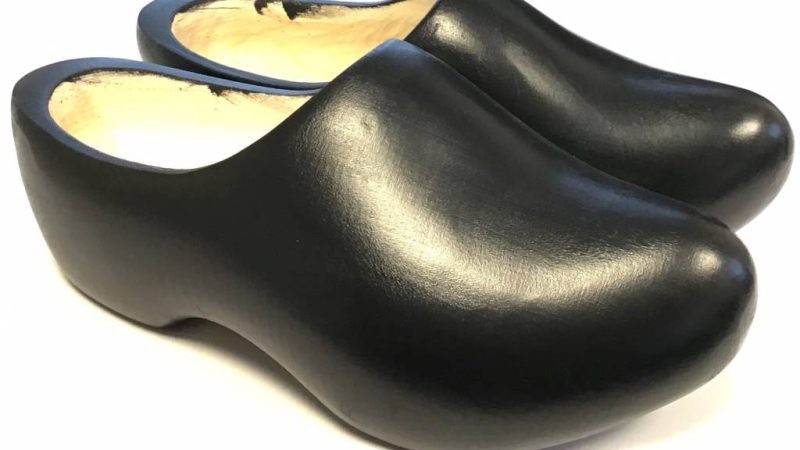Wooden shoes, often associated with Dutch culture, are a fascinating and iconic type of footwear. Their history stretches back centuries, yet they are often surrounded by misconceptions. While they are popularly linked to clogs from the Netherlands, wooden shoes have appeared in various forms around the world. Despite their long history and practical uses, some myths about wooden-shoes persist. Here, we debunk the top 6 myths surrounding wooden shoes and explore the truth behind this remarkable footwear.
Wooden Shoes Were Only Worn by Dutch Farmers
One common belief is that this type of footwear was limited to use by farmers. In reality, its appeal extended beyond agriculture. People in various professions, including fishing, crafting, and even mining, adopted it due to the protection and durability offered by its sturdy construction.
Wooden Shoes Are Uncomfortable to Wear
There’s a perception that these rigid pieces must be uncomfortable because they don’t offer the flexibility of other materials. However, many traditional versions feature a contoured interior to fit comfortably, and some even include leather linings for extra cushioning. The footwear also provides stability and support, and some wearers find the solid structure beneficial for posture.
Wooden Shoes Are Just a Fashion Symbol
While there is cultural significance, the practical origins cannot be ignored. They served as functional footwear to protect feet from harsh conditions, rough terrain, and heavy objects. Even today, some people in rural areas and various professions still use this style for its practical benefits.
All Wooden Shoes Look the Same
Often, when people picture this type of footwear, they think of a pointed toe with decorative paint. However, designs vary significantly across cultures. French, Japanese, and Swedish versions, for example, all have different shapes and materials reflecting local needs and customs.
Wooden Shoes Are Obsolete and No Longer in Use
Although they are not as widespread, these iconic pieces haven’t disappeared. In specific jobs like farming and gardening, their water-resistant properties remain valuable. The style also appears in cultural festivals, folk dances, and some outdoor work environments.
Wooden Shoes Have No Modern Relevance
There’s a belief that this form of footwear is now relegated to history. In contrast, modern designers have incorporated elements into contemporary styles. High-end brands have adopted similar designs, and wooden soles have inspired some orthopedic shoe features.
Only the Dutch Invented Wooden Shoes
While the Dutch certainly popularized a specific version, many other cultures independently developed similar types. The Japanese, French, and Indonesian styles all predate or evolved separately, each serving local customs.
Wooden Shoes Are Always Made from a Single Block of Wood
Although some traditional versions are indeed carved from one piece, other models integrate different components like leather, fabric, or even metal elements. In some cultural designs, multiple wooden pieces are joined together to create the base.
Wooden Shoes Are Difficult to Walk In
While the footwear may appear cumbersome, it actually promotes a stable gait when properly fitted. Many versions have soles designed to help with foot movement, and various cultural adaptations have different techniques for walking comfortably.
Wooden Shoes Can’t Be Stylish or Modern
Some may consider the look outdated, but designers continue to reinvent these iconic pieces. Modern versions have emerged as statement pieces, with embellishments and materials bringing them into high fashion.
Conclusion
Wooden shoes are more than just relics from the past; they are a unique piece of cultural heritage that has endured for centuries. Despite the myths surrounding them, wooden-shoes remain relevant today, whether for practical use, cultural events, or fashion inspiration. Busting these myths helps highlight the rich history and diversity of wooden-shoes, proving that they are not just a quirky symbol of Dutch culture but a globally recognized and evolving form of footwear.
FAQs
Q1. What are they made of?
Traditionally, materials like willow and poplar are used because they are lightweight yet durable. Modern versions sometimes incorporate leather for added comfort.
Q2. Are they still worn today?
Yes, especially in rural settings or cultural events, where they remain valued for durability and style.
Q3. Why were they originally worn?
The footwear served practical purposes, protecting feet from rough terrain and wet conditions, making them popular among workers.
Q4. Do they hurt your feet?
When fitted correctly, they can provide ample comfort. The interior shape is typically designed to accommodate the foot.
Q5. Are they considered stylish today?
Yes, many designers have reintroduced them as fashionable items, combining traditional styles with modern materials.
Also read: Amsterdam Holland Flag: 6 Fascinating Facts Every Tourist Must Know









